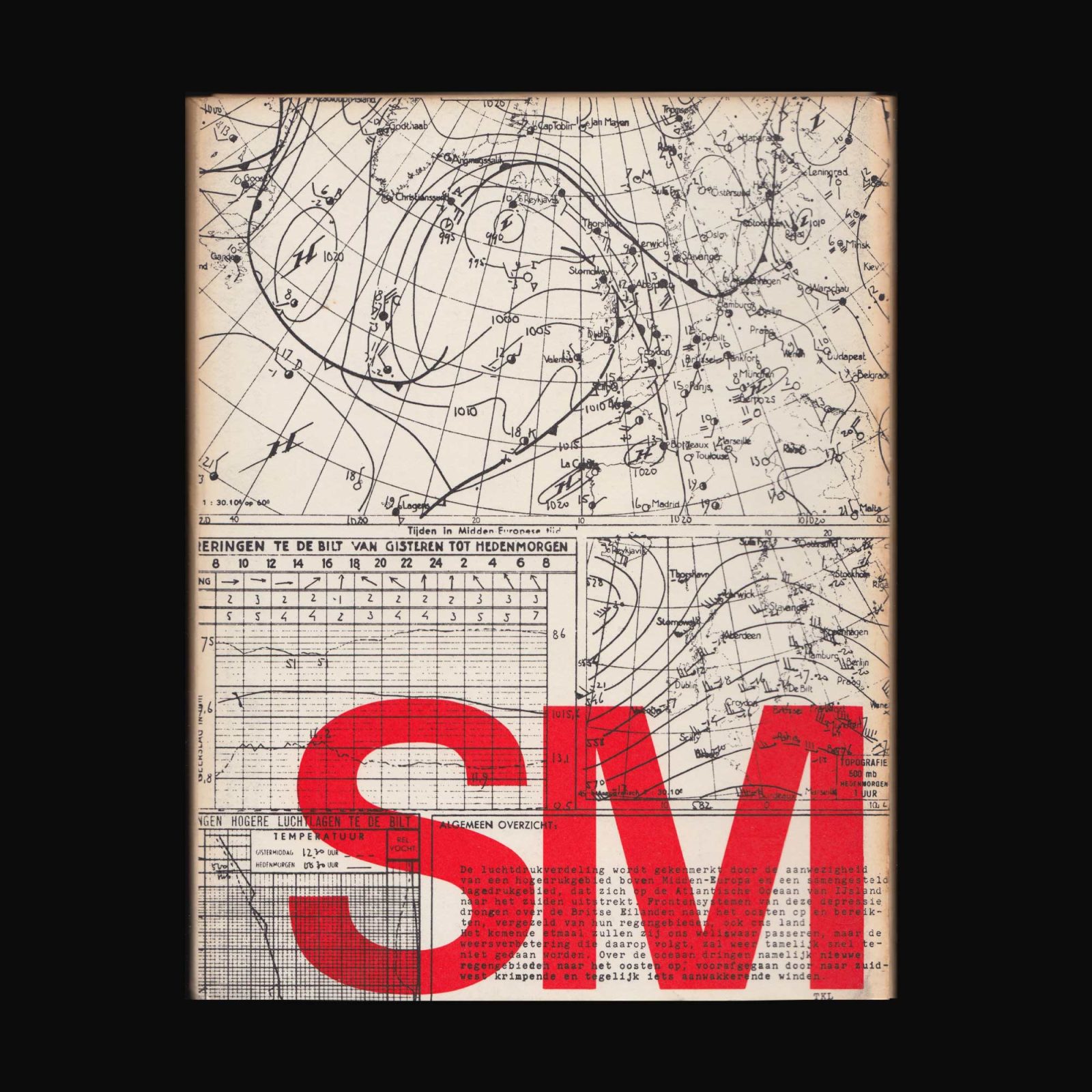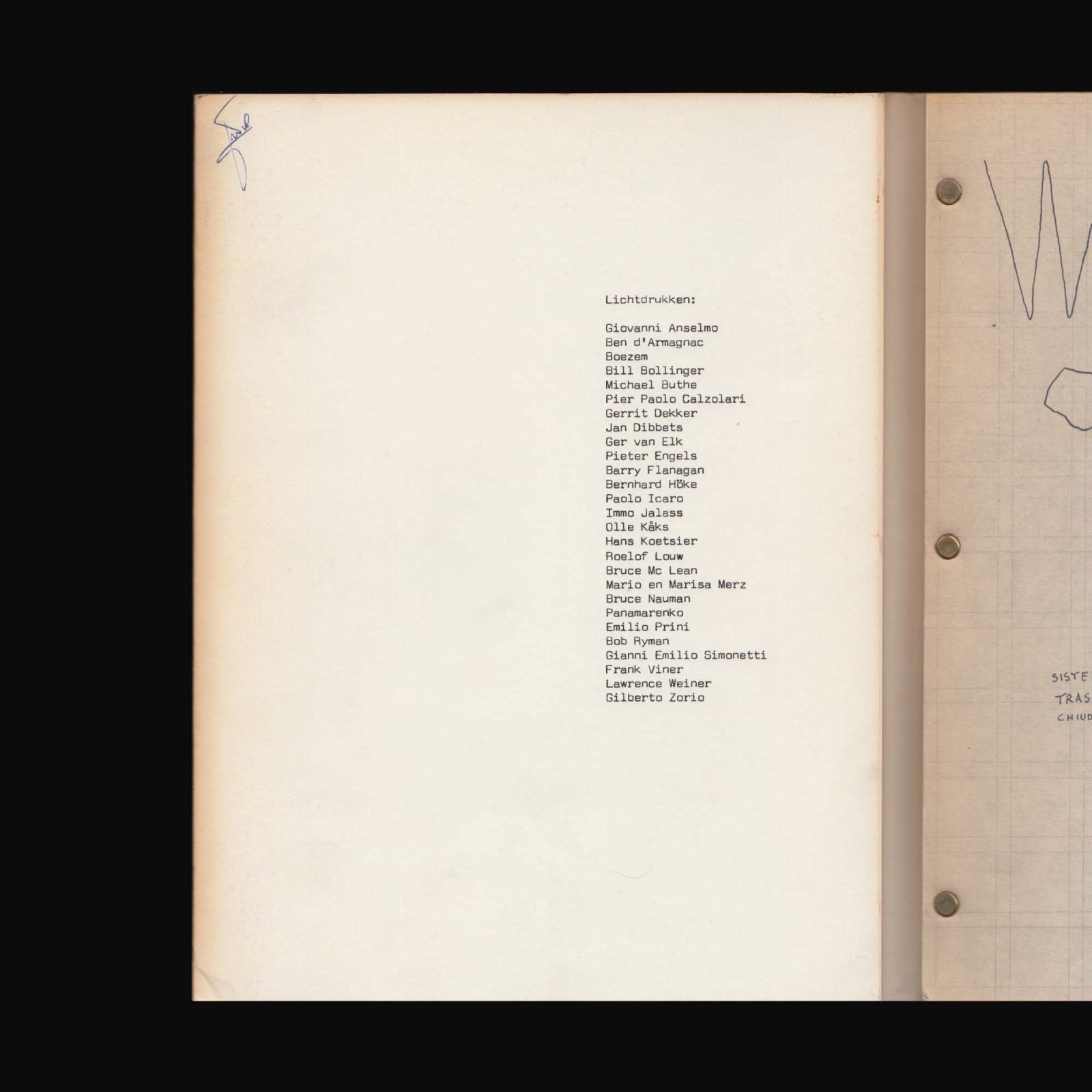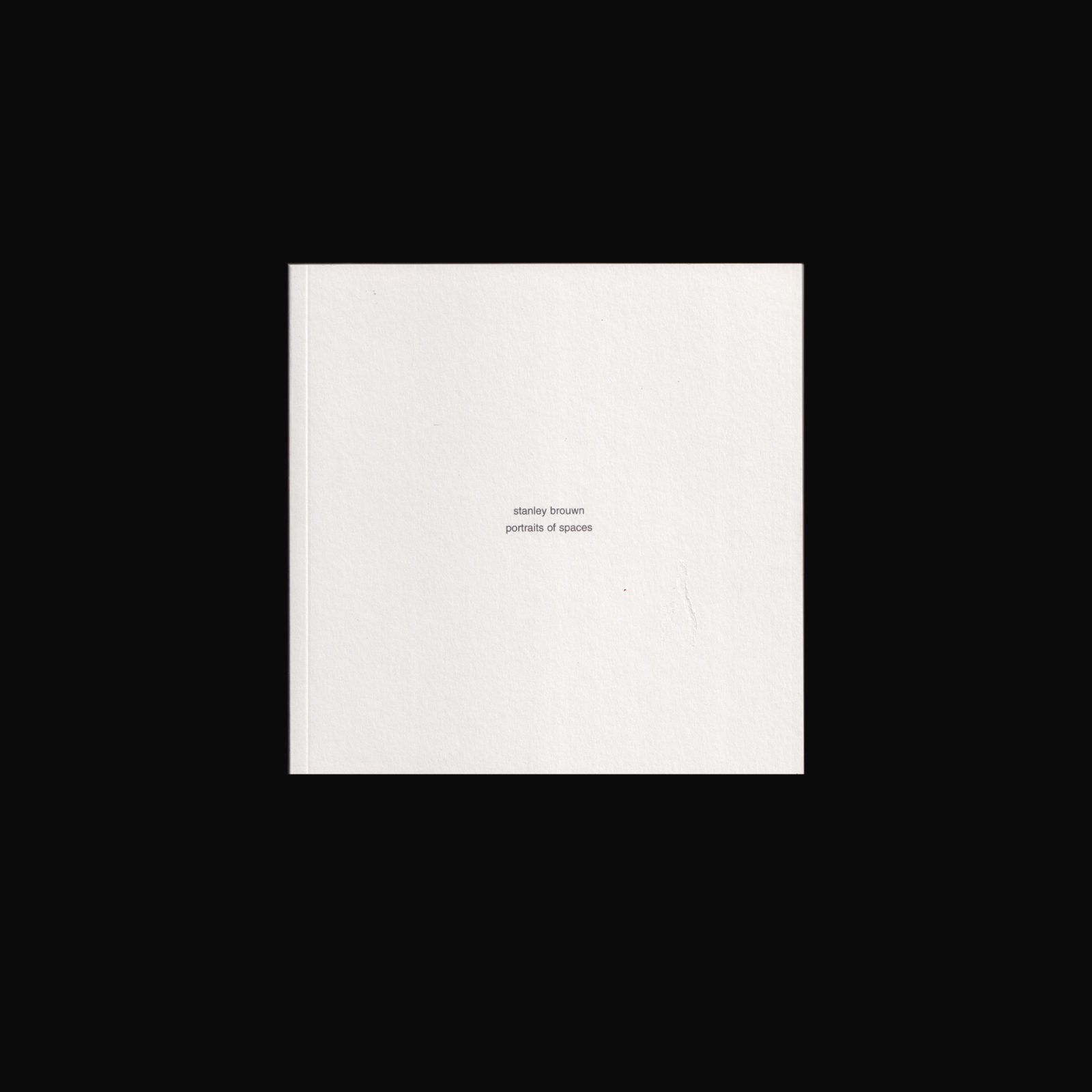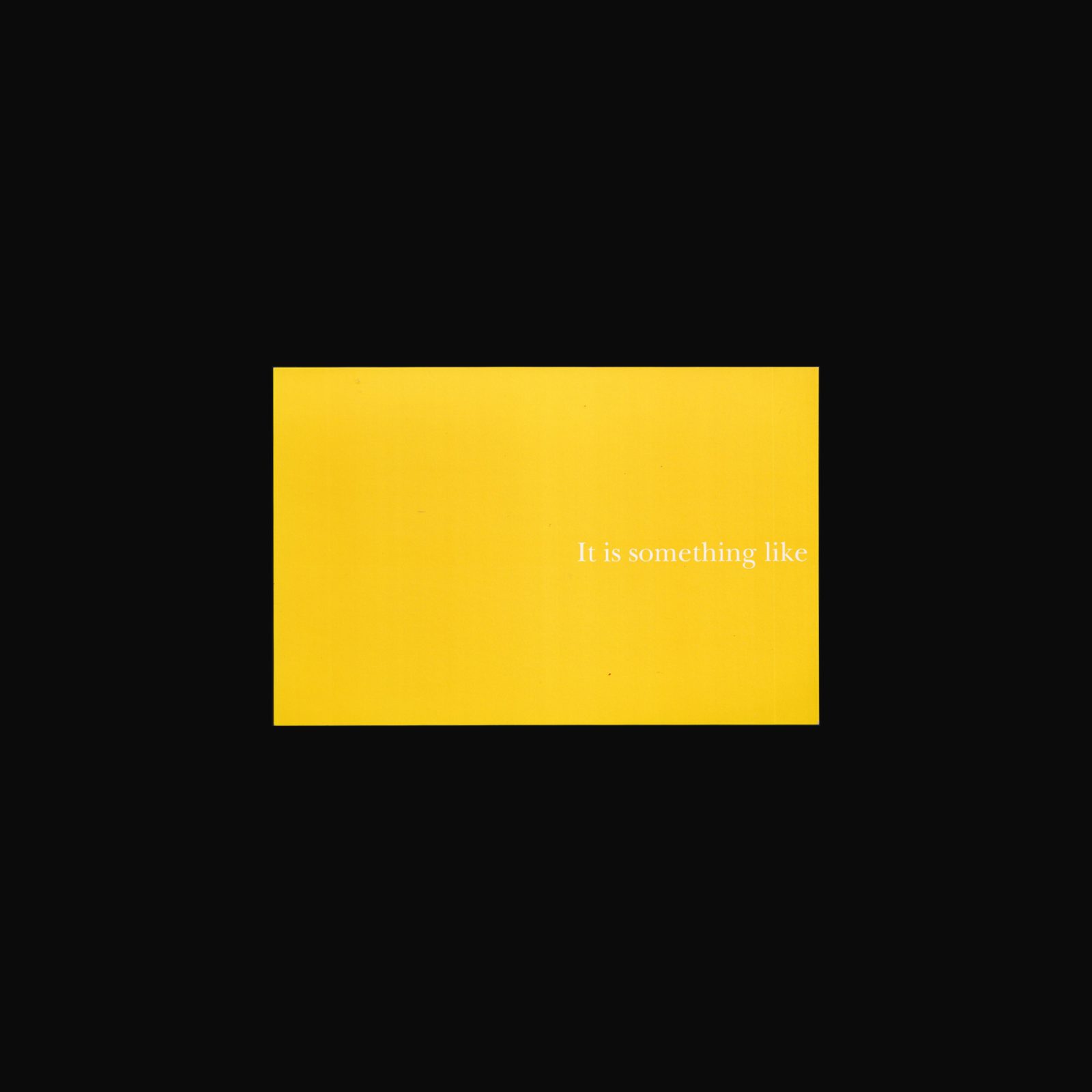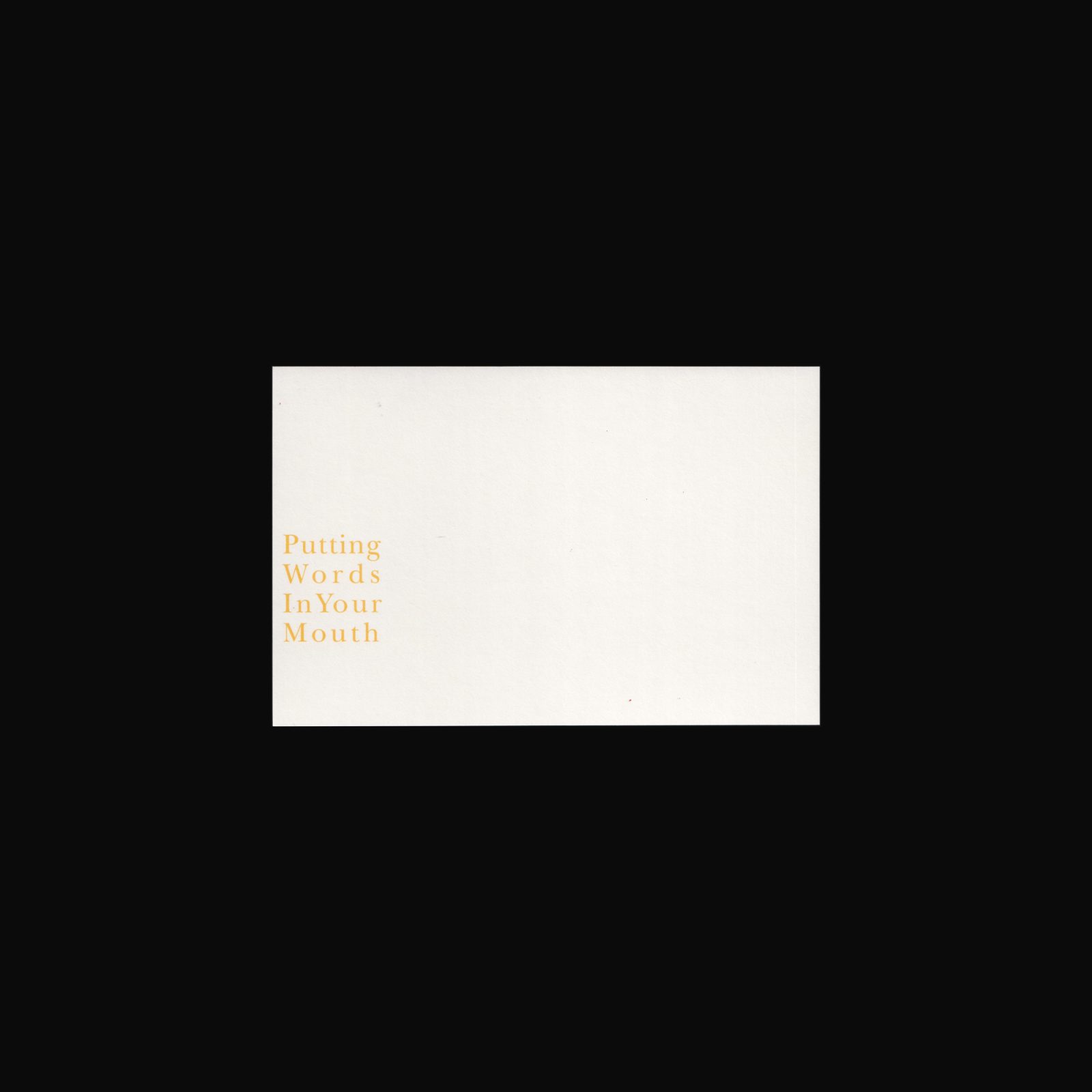Produced on the occasion of the exhibition Op Losse Schroeven: Situaties en Cryptostructuren, 1969, a groundbreaking exhibition organized by Wim Beeren that is still considered one of the most innovative surveys of new art from that decade. Including the artists Giovanni Anselmo, Walter De Maria, Robert Morris, Robert Smithson, Richard Serra, Neil Jenney, Michael Heizer, Ben d’Armagnac, Marinus Boezem, Bill Bollinger, Michael Buthe, Pier Paolo Calzolari, Gerrit Dekker, Jan Dibbets, Ger van Elk, Pieter Engels, Barry Flanagan, Bernhard Höke, Paolo Icaro, Immo Jalass, Olle Kåks, Hans Koetsier, Roelof Louw, Bruce McLean, Mario & Marisa Merz, Bruce Nauman, Panamarenko, Emilio Prini, Bob Ryman, Richard Serra, Robert Smithson, Keith Sonnier, Lawrence Weiner, Gilberto Zorio, Joseph Beuys, Douglas Huebler, Rafael Ferrer, Gianni Emilio Simonetti, Frank Viner Engels, Roelof Louw, Bruce McLean, Panamarenko, Emilio Prini, Gerrit Dekker, Hans Koetsier.
Designed by Wim Crouwel & Jolijn van de Wouw. SM Cat no.457
*Please note this publication is secondhand and may have some traces of previous ownership.
